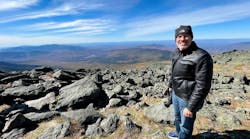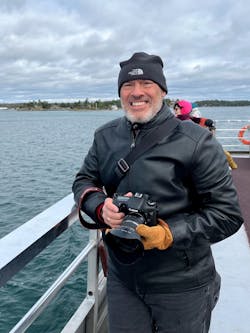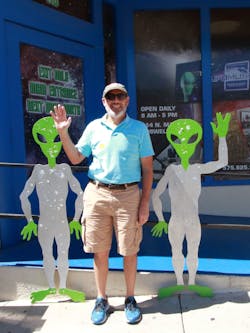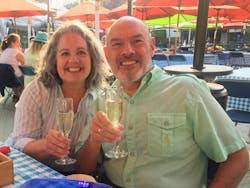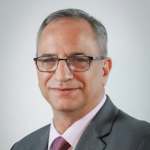Like many engineers, Carlos Enrique Garcia found his calling while doing his thesis. As a graduate student at the University of Wisconsin-Madison, Garcia was one of Prof. Manfred Morari’s first Ph.D. students. Morari consulted for the Shell process control group in Houston. It was led by the late Charles Cutler, who was a 2003 inductee to Control’s Process Automation Hall of Fame. Shell’s newly patented advanced computer control technology was the inspiration for his thesis. By the time Garcia finished his Ph.D., he’d already published five papers with Morari. One of them is still among the most referenced in its field.
The connections between Garcia and Cutler made it a natural fit for the up-and-coming engineer to also join Shell. “I could have gone into teaching, but I wanted to learn first-hand the practical challenges of implementing advanced technology in industry,” says Garcia, now retired after a 36-year career with the company.
Working with a legendary engineer within the company—Cutler developed the Dynamic Matrix Control algorithm (DMC), which made it possible to control and optimize the most challenging processes in the refinery¬—might have seemed like a great deal of pressure, but Garcia thrived and made a name for himself. In fact, Garcia became one of the pioneers of advanced computer control, especially MPC. “I witnessed the whole evolution,” he says. “Like in most other fields, increased computing power changed everything in control. You can go back to the 1950s, when many of the principles were developed, but deployments were limited by real-time computational capability.
“As computing power grew, users could solve larger problems that ran faster in real-time,” he continues. “The challenge has always been how to maximize the existing computational capability to deliver profitability.”
Garcia’s work exploited that computing power growth. As an individual contributor and manager of the control R&D group, he prides himself on the work he and his teams did in extending DMC technology with better computing engines, modeling and performance monitoring. He ended up writing more than 50 papers and three books.
His journey in learning industry’s practical challenges took a step up when he was 12 years into his career and was transferred to the company’s Deer Park chemical plant just east of Houston. He led a team of engineers, inspectors and technicians deploying and supporting instrumentation and control. He also managed the process engineering department.
After that assignment his career veered “out of control” as his friends joked. He returned to Shell’s head office to manage a global technology group supporting a new proprietary polymer business. His group oversaw the development and support of “first in the world” monomer and polymer plants. He learned a lot about the challenges of managing intellectual property and meeting customer requirements. Of course, he also ensured these new plants had the most advanced conntrol technology.
Garcia’s career path took him back to control when he became manager of the control department at Motiva’s Port Arthur refinery, a joint venture between Shell and Saudi Aramco. The two companies have since dissolved their refinery partnership. He came at the time when a massive expansion project was being completed, turning it into the largest refinery in North America. “I was there to build the control group for the expanded operations,” Garcia explains.
But it was his last six years with Shell that saw him finally get his “dream job.” He was named global discipline head for automation, control, and optimization—the highest position for a control engineer in the corporation. He was responsible for maximizing technology value for every Shell business—from upstream to manufacturing—as well as managing standards and skill pool development. It was a position that took him all over the world, where he met and managed control engineers from nearly every country where Shell operated.
"It was a fun and interesting career with new challenges in every assignment,” he recalls. “I was never comfortable where you just did the same old thing over and over.”
Garcia retired from Shell in 2018, when he thought he’d embark on a teaching and/or consulting position. However, he decided it was time to enjoy his other passions in life—his family, and especially spend more time with Griseida, his wife of 42 years, who he met while they were students in Wisconsin.
“One of my passions is music, so I sing at church and get together with my musician friends,” he says. He visits South Carolina often, where his son followed in his footsteps and became an engineer. He and Griseida also often travel to their native Puerto Rico to visit his in-laws.
As he sits back and reflects on 36 years of accomplishments, he simply says, “Now, I’m making music and memories instead of new technology and polymers.”
